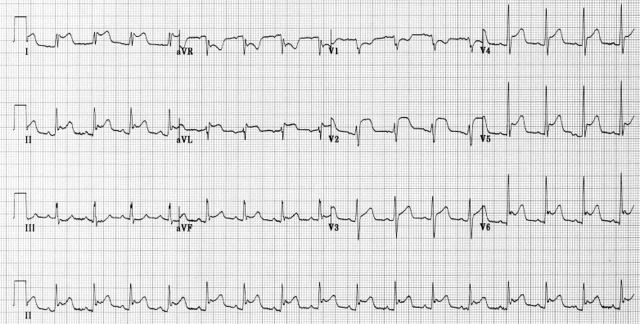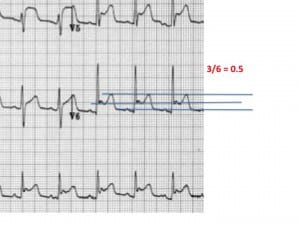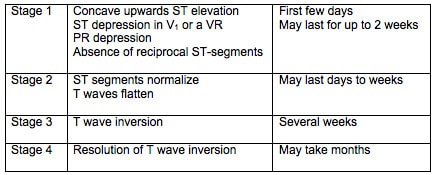 I’ve done blogs on early depolarisation and infarction in the past. The story isn’t complete unless we also discuss pericarditis. In acute pericarditis the ST elevation that occurs reflects abnormal repolarization that develops secondary to pericardial inflammation.
I’ve done blogs on early depolarisation and infarction in the past. The story isn’t complete unless we also discuss pericarditis. In acute pericarditis the ST elevation that occurs reflects abnormal repolarization that develops secondary to pericardial inflammation.
PR depression is very specific for pericarditis. It is a result of subepicardial injury. PR depression occurs in all leads except aVR and V1. In these two leads the PR segment may be elevated (Cardiol Clin 1990, 8:639.44)
STAGES OF PERICARDITIS
All 4 stages occur in less than 50% of patients.
ST segment elevation in pericarditis is usually concave as compared to the convex shape of infarction. There is no arterial territorial distribution as in myocardial infarction, no reciprocal changes, no Q waves (unless there has been a previous infarction) and no T wave inversion when the ST segments are elevated.
PERICARDITIS vs AMI vs REPOLARIZATION
ST/T RATIO
 The ST/T ratio can also be used to differentiate early repolarization from acute pericarditis. Measure ST elevation in millimetres in V6, from the isoelectric line, then measure the tallest point of the T wave, in millimeters, from the isoelectric line. If ST/T is >0.25 in V6 it suggests acute pericarditis (Circulation 198; 65:1004-9)
The ST/T ratio can also be used to differentiate early repolarization from acute pericarditis. Measure ST elevation in millimetres in V6, from the isoelectric line, then measure the tallest point of the T wave, in millimeters, from the isoelectric line. If ST/T is >0.25 in V6 it suggests acute pericarditis (Circulation 198; 65:1004-9)











